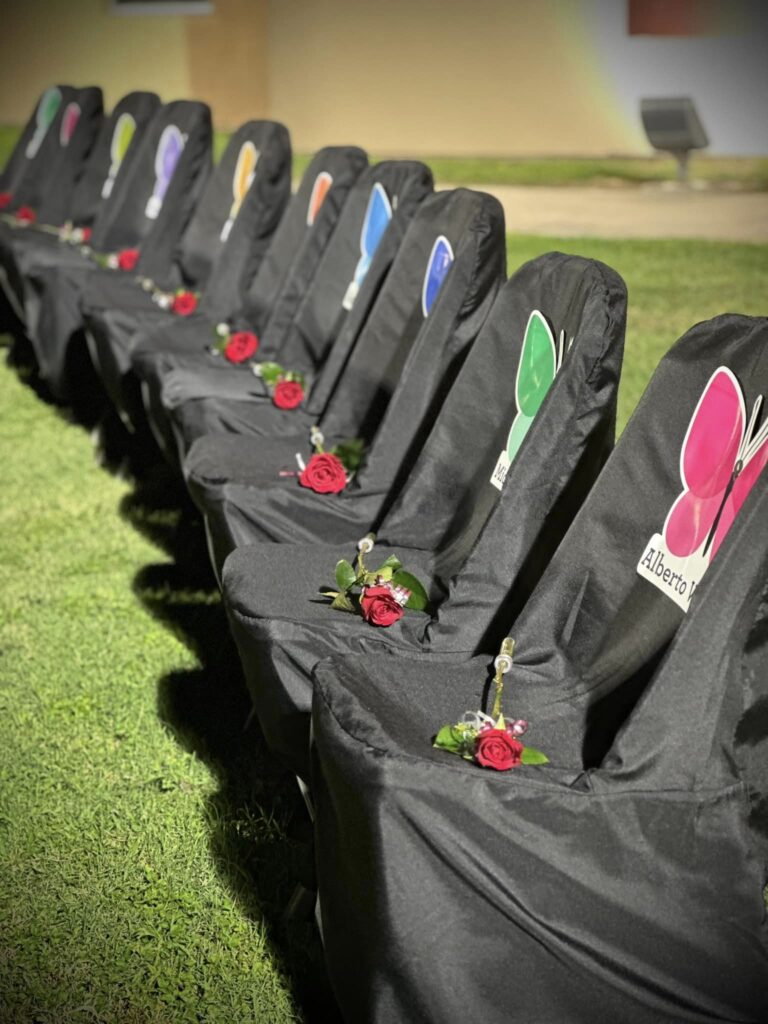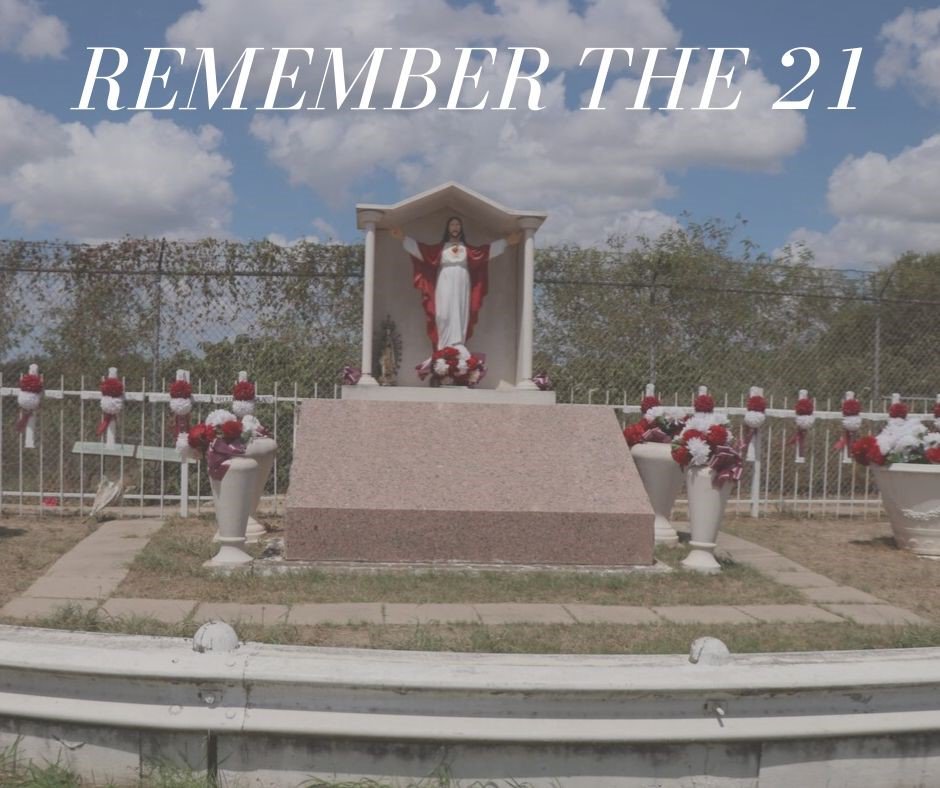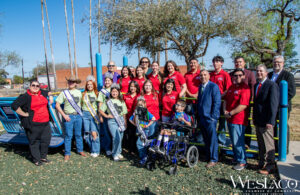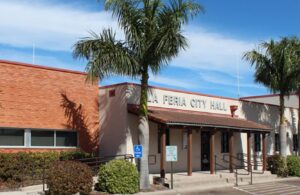- La Feria Community Holds Succesful Business Mixer Event
- Little Nashville to Take Place in Downtown Mercedes
- Lions Basketball Captures District Gold
- La Feria ISD Students Compete in Regional Chess Tournament
- Lions End First Half of 32-4A on a High Note
- La Feria ISD Held Another Successful Parent Conference
- Strong Appearance for Lions at Hidalgo Power Meet
- LFECHS Students Get to Meet Local Actress
- Students Participate in Marine Biology Camp
- Two LFECHS Students Qualify for All-State Band
Memorializing the 35th Anniversary of the Alton School Bus Crash
- Updated: October 5, 2024

By Mike Villarreal
Many may not remember the Alton school bus crash, but the student’s lives that were lost on that horrific day will be memorialized for years to come.
On September 21, 1989, a tragic event altered the community of Alton, Texas. Twenty-one students lost their lives in what is considered the deadliest school bus crash in Texas history. It was a Thursday morning, and everyone looked forward to the weekend. However, their plans were cut short when a Dr. Pepper truck failed to stop at a stop sign and collided with the school bus that was en route to drop off students at the campus.
The crash caused the school bus to fall into a caliche pit that was filled with almost 10 feet of water. This triggered survival instincts in the 81 middle and high school students on board. Some of the students managed to escape from the submerged bus, but sadly, others did not survive and were unable to make it to school or back home to their loved ones.
The community of Alton, along with first responders and teachers, have not forgotten the individuals who perished 35 years ago. On September 21, inside Mission CISD school bus No. 6, the atmosphere was filled with friends chatting, daydreaming, and just messing around with each other before arriving at school for the day.
The school bus driver, Gilberto Pena, always followed the same route and arrived at his pick-up locations on time. On his second trip of the morning, he first picked up middle school students and then high school students, whose ages ranged from 12 to 19 years old.
At 7:30 am, a Valley Coca-Cola-owned Dr. Pepper truck driving northbound on Bryan Road ran a stop sign and collided with a school bus. The fully loaded Dr. Pepper truck, traveling 45 miles per hour, struck the school bus from behind, causing everyone inside the bus to be thrown around. The school bus driver, Pena of Mission CISD, attempted to steer the bus to safety but was unsuccessful, and the bus ended up dropping into a water-filled caliche pit. The bus ended up facing forward and stood vertically for a few seconds before falling onto its left side.
The National Transportation Safety Board (NTSB) reported that the bus sank in less than a minute, causing water to fill up through half-open windows and cracks in the windshield. The emergency exit door at the rear of the bus initially worked but later jammed shut. With the entrance door damaged, the students had no choice but to escape through the side windows. The students and bus driver Pena attempted to escape through the 9-inch by 24-inch side windows. However, escape was made more challenging by the murky water, and some students became stuck in the small windows.
At the time, Alton had five police department officers and 18 volunteer firefighters. The call for help came in at 7:34 am after a resident from a nearby house heard a loud impact from the Mile 5 and Bryan Road intersection.
At that moment, the resident could only see a crashed Dr. Pepper truck but couldn’t see the bus. When they reached the scene, they realized the school bus was submerged in the pit, and the students yelled for help. Alton police officers arrived at the scene six minutes after the first emergency call but did not see the school bus initially.
An Alton volunteer firefighter was the first to jump into the pit and reach the bus thirteen minutes after the first call. When the city was at its most vulnerable moment, the community did not hesitate to help rescue the students, with eyewitnesses jumping into the water to reach the bus and rescue the students.
The rescue teams, eyewitnesses, and Mission CISD High School coaches who were CPR certified were called upon to assist in the rescue. It was a shock for the community as they looked down into the 40-foot-deep pit, and the students were looking up at the cliff, asking for help tand waiting to be rescued.
There were many people gathered at the scene, including first responders, off-duty doctors, EMS, and priests who were praying over the sunken school bus and the families looking for their loved ones. Those assisting with the rescue were stationed at three spots on the scene: inside the pit’s shoreline, at the top of the cliff, and inside the bus, saving students one by one.
Rescuers set up 35-foot extension ladders to reach the pit’s shore. Some rescuers swam and paddled to the bus without any gear, using emergency rafts to rescue as many students as possible. Firefighters extracted the students through the windows or by breaking them to retrieve and help them up the ladders.
Some students who managed to escape the bus floated or swam using life preservers thrown into the pit by rescuers. Nearby neighbors also helped by throwing water hoses into the pit to assist in pulling them out. Additionally, a man on a horse used a water hose to aid in pulling out students.
EMS treated students who reached the top and transported them to local hospitals. Inside the pit, the rescue operation was ongoing, with attempts to revive the remaining students through CPR.
On that day, 19 students were pronounced dead on the scene due to drowning. A total of eleven students were rescued from the middle section of the bus by Alton’s first responders. In coordination with Mission CISD and first responders, the city of Alton and Hidalgo County set up two designated stations for parents to locate their loved ones.
The first station was managed by former Mission CISD School Board member Ciro Ochoa at Mission Community Center. On that day, Ochoa’s responsibility was to inform parents about the status of their children – whether they had survived or passed away – and then direct them to either report to the hospital or proceed to the second station. The second station was located at the Hidalgo County Veterans Pavilion, which was used as a temporary morgue for parents to identify and claim their children.
Ambulances and vans rushed nearly 60 students who managed to get out of the pit to the following hospitals: Mission Hospital, McAllen Medical Center, and Rio Grande Regional Hospital.
Of those 60 students, 3 suffered severe injuries, 46 had minor injuries, and 11 were not injured. School bus driver Pena sustained minor injuries, along with Ruben Perez and an unnamed passenger of the Dr. Pepper truck.
A rosary was held at the Basilica of Our Lady in San Juan Del Valle – National Shrine, marking the first of its kind in the church’s history. This tragedy led to the implementation of federal regulations that required upgraded exits on school buses to allow safe escape in an emergency.
The impact of this accident will always be felt for generations. However, the community of Alton has remained humble and resilient at heart, as a community should in a time of suffering and loss. The Alton and Mission community has honored the 21 students with ceremonies, candlelight prayers, a memorial garden, and a monument.
The caliche pit, which was once filled with water, is now a memorial site where 21 crosses are on display to represent each life that was lost in the crash 35 years ago. The 21 crosses are surrounded by notes, flowers, a marble inscription of the 21 names, and a life-sized Catholic statue.
It may have been 35 years ago, but the memory of those 21 students will never fade for the RGV and those who survived that day.
In Memoriam of the 21: Maria Alfaro, Carmen Canales, Elizabeth Flores, Ruby Lopez, Roberto Bazaldua Jr., Elda P. Cruz, Abdon Garcia, Marta Amelia Lozano, Margarita Buentello, Raul Flores, Armando Gonzalez, Josee L. Ortega, Veronica Perez, Yesenia Perez, Roman Quintero, Apolonia Regalado, Maria Regalado, Anna Rodriguez, David Saenz, Michael P. Saenz, and Alberto Vasquez.






